Randall's Island is located in the East River between northern Manhattan and Queens. What I’m referring to as Randall’s Island in this newsletter also includes Ward’s Island. Once two distinct land masses, Ward’s and Randall’s were gradually joined together when the strait seperating them, Little Hell’s Gate, was infilled. A third island, Sunken Meadow, was also incorporated into present day Randall’s Island.
With a population of less than 1,700 people, you may ask, is Randall’s Island even a neighborhood? There is quite a bit of history here, and the island has been in the news recently, so it is certainly seemed worth investigating.
Just a heads up, I’m going to take next week off from the newsletter. This edition wraps up my third trip around all five boroughs or what I like to call a QBBSM (pronounced cubism?). The geographical EGOT seems like as good a way as any as measuring my progress in this process. 15 neighborhoods so far, only 265 or 53 QBBSMs to go.
A MOST DELIGHTFUL RETREAT
In 1637, Dutch Governor Wouter Van Twiller purchased both islands from the Lenape Indians who originally named Randall’s Minnehanonck, meaning “It's Nice To Be On The Island” and Ward’s Tenkenas or "Wild Lands.” Nearby Roosevelt Island, another Van Twiller purchase, was reportedly also called Minnehanonck, so I'm not sure if the Lenapes had run out of names or if there is some sort of glitch in the historical record. Any toponymist will tell you that figuring out the origin of a place’s name is not an exact science.
Van Twiller used the islands for farming, and their new names, Great Barent and Little Barent, were in honor of his cowherd, Barent Jansen Blom. Barent probably would've been disappointed to learn that people had misheard his name and for the next one hundred years, the islands were known as Great Barn and Little Barn.
After the British kicked out the Dutch in 1664, the islands went through a series of owners. In a move portending the area’s future, George Washington briefly used Randall’s as a smallpox quarantine site, but he was soon pushed out by the British, who used the strategically located islands as a military post during the Revolutionary War.
Eventually, the island’s current namesake, Jonathan Randel (yet another spelling error), purchased the island in 1784. Jaspar and Bartholomew Ward purchased adjacent Ward’s around the same time. The Wards built a cotton mill as well as the first bridge over the East River, connecting the island to Manhattan at 114th St in Harlem.
Randel continued the island’s tradition as farmland. His farm was famous for its orchards with hundreds of different varieties of apple, cherry, pear, and other fruit trees. When Randel died, his heirs listed the property suggesting it as the perfect spot for a "Hotel and Public Resort that would afford a most delightful retreat to hundreds of citizens during the Summer season from the heat, noise, and sickly atmosphere of the city."1
Turns out this was wishful thinking.
HOUSE OF REFUGE
By 1851 both Randall’s and Ward’s were owned by the city. Their isolation made them convenient places to house the city’s unwanted and abandoned. As soon as the islands came under city control, the process of relocating Manhattan’s overcrowded potter’s fields (cemeteries for unknown or unclaimed bodies) was underway. Over 100,000 bodies were brought over.
Both islands were quickly colonized by a dizzying network of hospitals and asylums, including an “Idiot Asylum,” The State Emigrant Refuge for "sick and destitute aliens,” the Inebriate Asylum, and the New York City Asylum for the Insane.
In 1854, the euphemistically named House of Refuge was built by the Society for the Reformation of Juvenile Delinquents. Occupied predominately by teenage Irish boys, the institution was essentially a sweatshop known for its inhumane treatment of its adolescent detainees.
The New York State Department of Mental Hygiene took over both the immigration and asylum buildings in 1899 and built the 4,400-bed Manhattan State Hospital, at the time the largest psychiatric hospital in the world. Today, the renamed Manhattan Psychiatric Center has only 500 patients. The complex is also home to the Kirby Forensic Psychiatric Center, a maximum-security facility that holds mentally-ill patients who have been charged with a crime. Daniel Rakowitz, “The Butcher of Tompkins Square Park,” who killed his girlfriend and served a soup made from her boiled body parts to the homeless in Tompkins Square Park, has been held there since 1991.
In 1933, ownership of the island was transferred to Parks & Recreation under the aegis of Robert Moses. Moses launched a plan to turn the island into a recreation destination, building baseball fields, playgrounds, and a stadium while shutting down the children’s hospital and the House of Refuge. He also began the process of connecting Randall’s, Ward’s, and Sunken Meadow with infill.
The new Downing stadium, where Jesse Owens won the 100-yard dash at the 1936 Olympic trials, became the center of activity on the island.
It was also the location for the three-day New York Pop Festival in 1970, a disaster of an event known as "The Woodstock Hangover."
WHAT A RYP/OFF
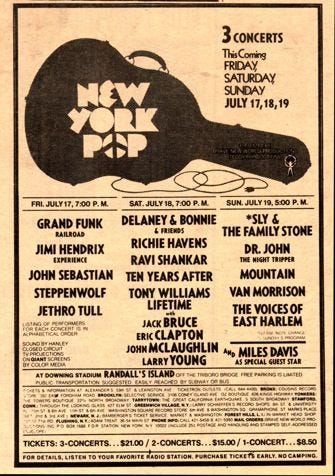
With a lineup boasting Jimi Hendrix, Ravi Shankar, Miles Davis and Sly and the Family Stone, the New York Pop festival was poised to become the music event of 1970.
However, three weeks before the shows, a collection of activists, including members of the White Panthers, Yippees, and The Young Lords, calling themselves the RYP/OFF Collective, presented the promoters with a list of different demands, including 10,000 free tickets and $100,000 in bail money for an incarcerated Black Panther.2 In exchange, they would provide security and would agree to not advertise the festival as a free event. Trying to avoid a riot, the promoters capitulated.
Gate crashing was so widespread on the first two days that the promoters gave up and let everyone in for free the final night.
“We're taking the biggest bath in the history of rock festivals,” a spokesman said. “There's no money for security, and security has been ineffectual so far, so we might as well let everyone in.”3
Many of the headliners, realizing the promoters weren’t going to be able to pay them, didn’t even bother showing up, further ratcheting up tensions.
Like Woodstock, the festival was filmed and the promoters hoped they would be able to recoup some of their losses at the box office. Director Bert Tenzer released Free in 1974. It interspersed concert footage with re-enactments of the behind the scenes drama that unfolded in the days leading up to the event. The movie flopped and was re-released in 1976 as The Day The Music Died, this time including clips of the Beatles, the Doors and Marvin Gaye, none of whom actually appeared at the festival. It is a weird piece of filmmaking with some terrible acting, but nevertheless an interesting look at the politics of the time with some great music.
SHELTER
Before Ellis Island opened in 1892, Ward’s Island was one of the main ports of entry for new immigrants. Some 130 years later, we have come full circle. In October 2022, a temporary shelter compound was moved from Orchard Beach in the Bronx to Randall’s Island. In less than a month, it closed due to underuse. Migrants cited the island’s isolation and lack of public transportation options as reasons they didn’t want to be housed there.
Just this past week, the city has started to rebuild the Randall’s Island tent compound. With the need for housing more acute in recent months, the capacity of the site has been doubled to 2,000 beds. When the first complex opened in 2022, there were 23,800 recently arrived migrants looking for shelter throughout the city. Currently, that number is estimated to be 57,200.
In a puzzling bit of mental judo, much like the RYP/OFF collective providing “security” for the event they were blackmailing, the company tasked with building the tent complex was also responsible for constructing part of Trump’s border wall.
BIG BERTHA
I had two experiences on Randall’s Island before I actually moved to the city twenty years ago. Both involved sports, neither involved asylums.
In 1986, my 6th-grade football team had an away game in the city. Pulling off the Triborough Bridge onto the island, I was amazed to see that we would be playing in the shadows of the bridge that had brought us here. My most vivid memory is the carte blanche we were given when it came to heeding nature’s call. Following the lead of the opposing team, those of us who needed to relieved ourselves against the giant concrete piers that held up the bridge. Core memory unlocked.
During the game, the home team’s running back spent the day punishing our defense with his aggressive north-south running style, seeming to relish the contact with our soft suburban bodies. I can still see his barely concealed sneer emerging from under his helmet-matted frizzled hair as we grudgingly went through the high-five line at the end of the game. Our paths crossed again several years later, and, not making the connection that had battled on the gridiron years before, quickly became best of friends, which we remain to this day.
I’ve only recently been able to talk about my other experience on Randall’s Island in the late 90s. My sister invited me to join her and her work colleagues on a trip to the Randall’s Island driving range. One of her co-workers, we will call him Ron, said I could try out his new “Big Bertha” club, which sounded great to me.
Now, I am not exactly a natural when it comes to golf. The few times I have played, I just swing the club as hard as I can and see what happens. What usually happens is that I lose the ball, and the people I am playing with get annoyed. This time, on my first swing, I missed the ball completely, hitting the ground with the club and sending an intense shock of pain into my elbow. This wasn’t my first rodeo, so I knew just what to do - swing harder. I hit the ground again. This was getting embarrassing.
I decided I would try to pre-visualize, a classic sports technique employed by all the greats. My knees loose, hips rotated, I let the head of the club drop smoothly behind my head, swung crisply forward, and made perfect contact. The club felt like a feather in my hand, the ball, not quite sailing, but definitely airborne. It was then, with a sickening feeling, I saw the bottom half of the club somersaulting along the same trajectory as the ball. I handed Big Bertha’s decapitated shaft back to a slack-jawed Ron and quickly excused myself to the bathroom.
SIGHTS AND SOUNDS

FEATURED PHOTOGRAPH
Photographer Kwame Brathwaite died in April this year. His work “created the visual overture for the Black is Beautiful Movement in the late 50s and early 60s.”4
This picture was taken at the Randall’s Island Jazz Festival in 1958 when he was only 20 years old.
This Aperture magazine article is a good synopsis of Brathwaite’s career and tells the story of how he helped bring about the “Black is beautiful” movement.
NOTES
Downing Stadium was replaced by Icahn Stadium on 2005. On May 31, 2008, Jamaican sprinter Usain Bolt set the then world record in the 100 with a time of 9.72 seconds.5
The Kirkbride Plan asylums (like the Manhattan State Hospital) tended to be large, imposing institutional buildings, with the defining feature being their "narrow, stepped, linear building footprint" featuring staggered wings extending outward from the center, resembling the wingspan of a bat.
Martin Hildebrandt, considered to be the first professional tattooist in the US, was arrested for disorderly conduct in 1885 and sent to the insane asylum on Randall’s Island. Five years later, he died.
.
Scott Joplin, the “King of Ragtime” also died there on April 1, 1917 of syphilitic dementia at the age of 48.
http://s-media.nyc.gov/agencies/lpc/arch_reports/367.pdf
https://dangerousminds.net/comments/the_day_the_music_died
https://www.nytimes.com/1970/07/20/archives/rock-festival-admits-all-free-after-randalls-gatecrashing.html
https://kwamebrathwaite.com/about/
https://en.wikipedia.org/wiki/Icahn_Stadium

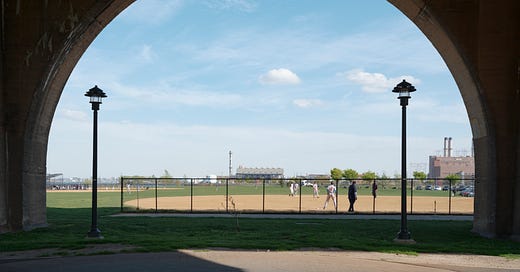


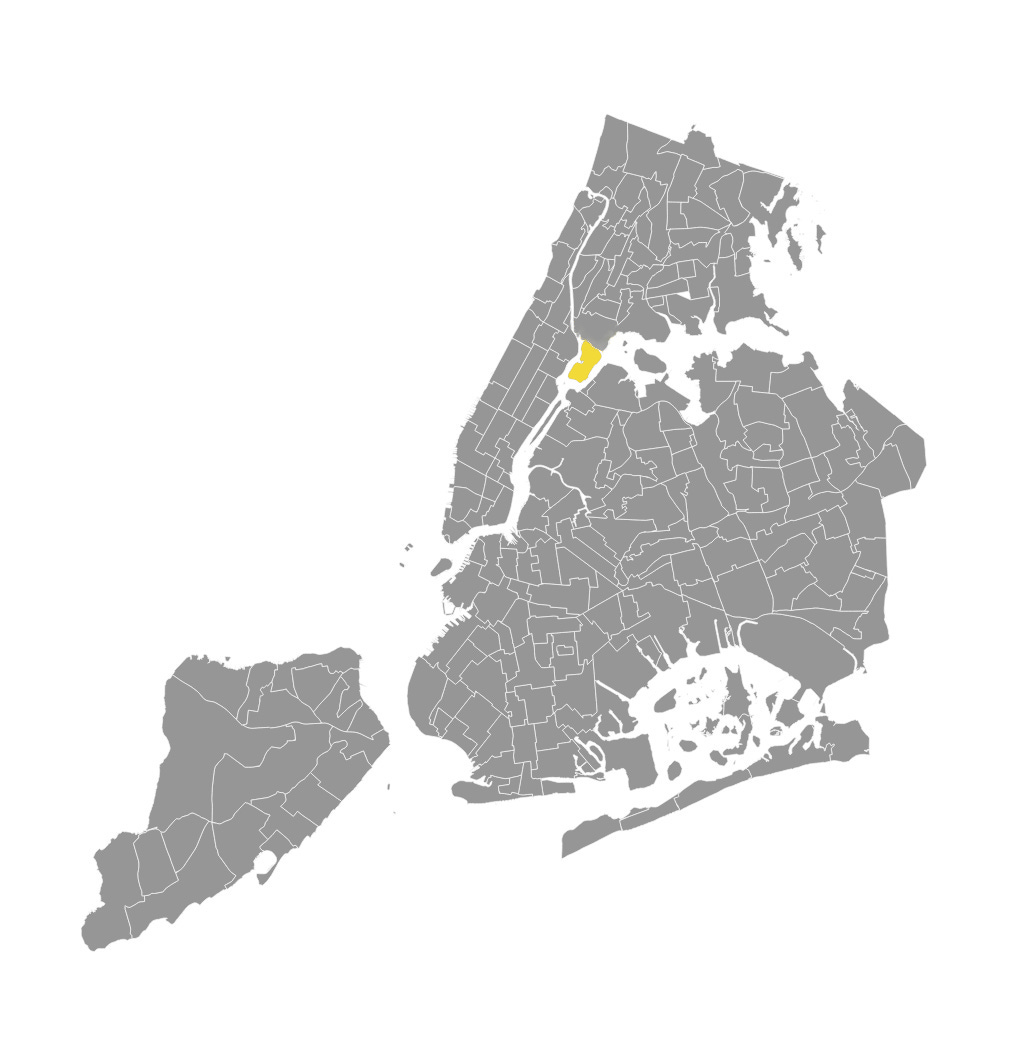
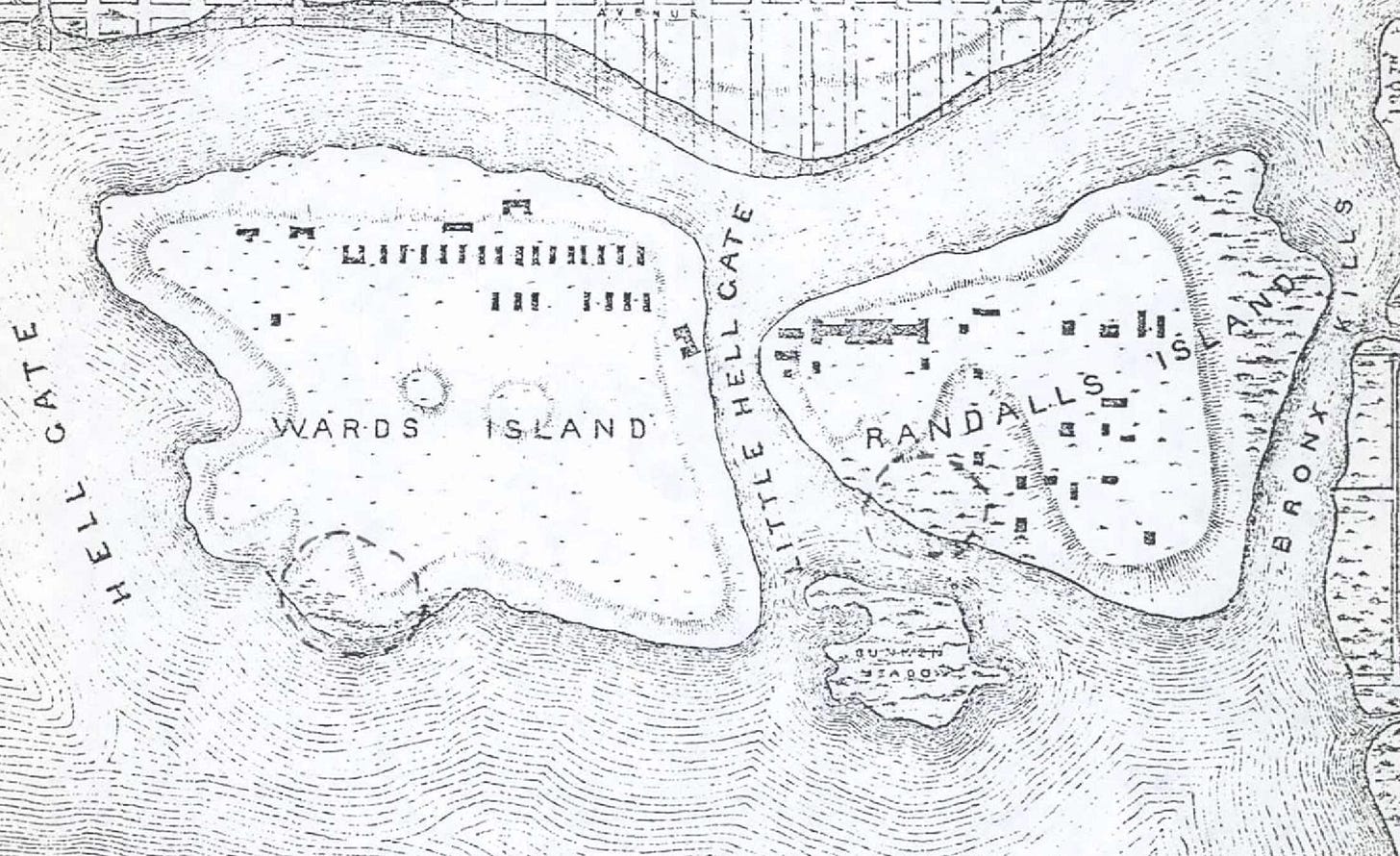
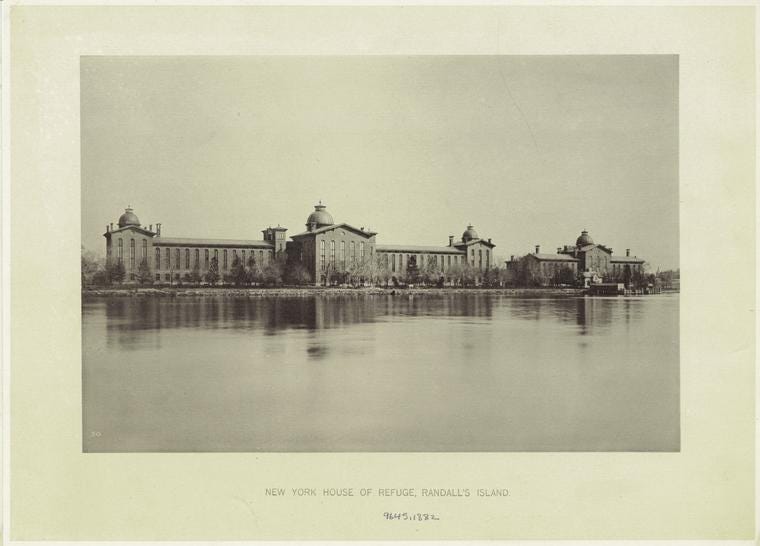
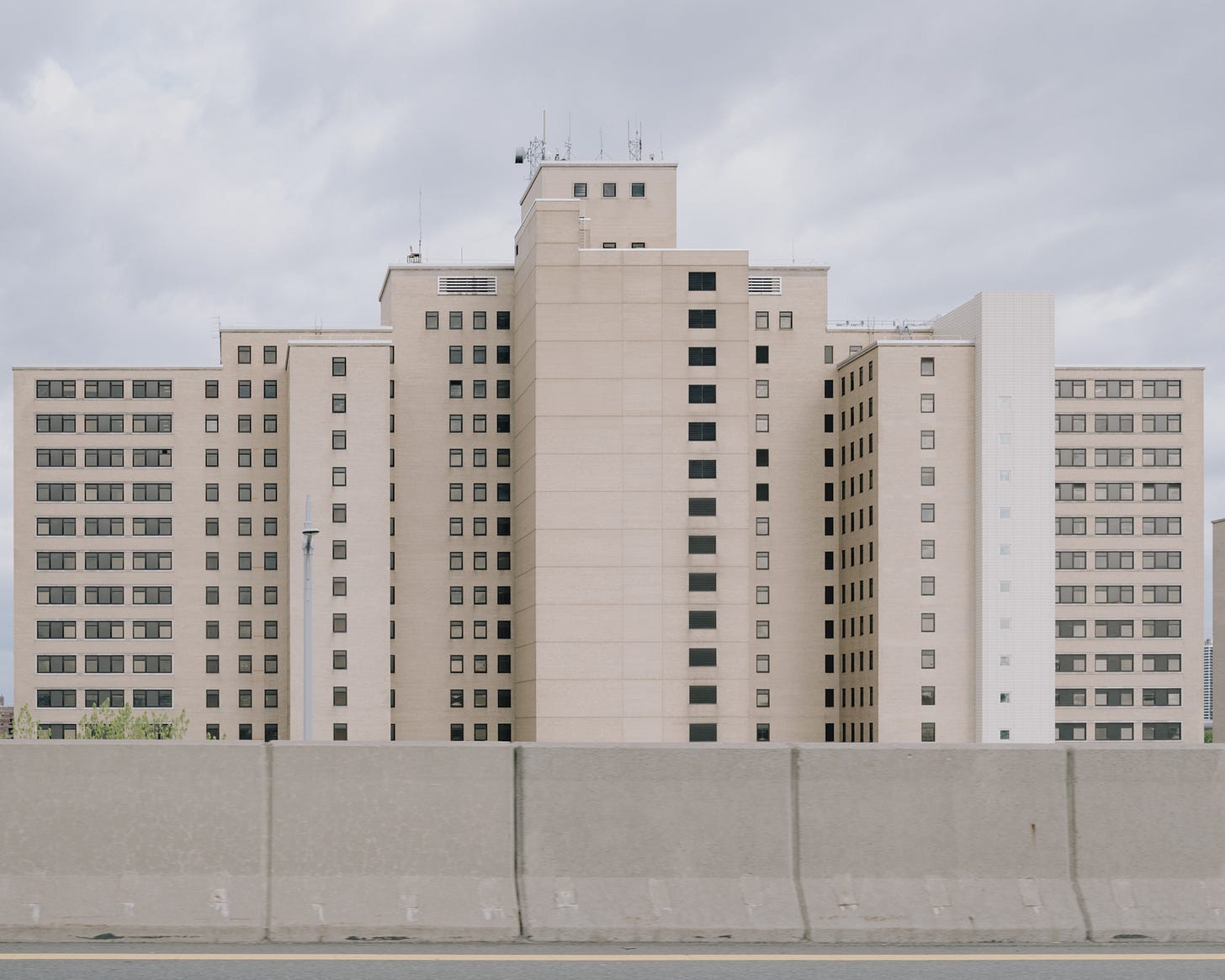
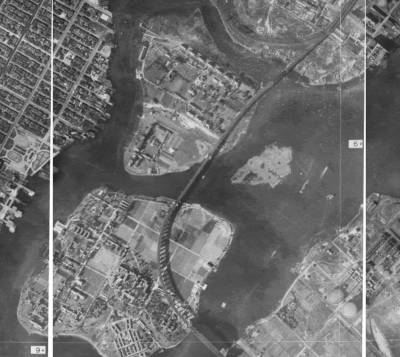
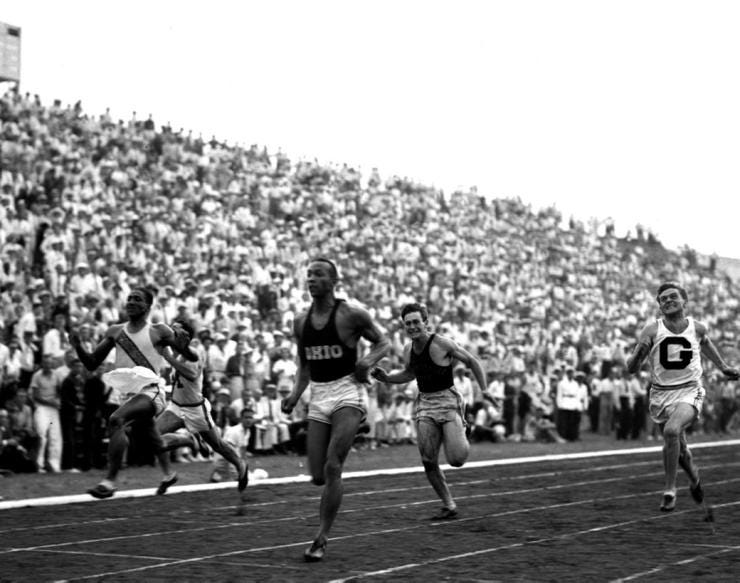

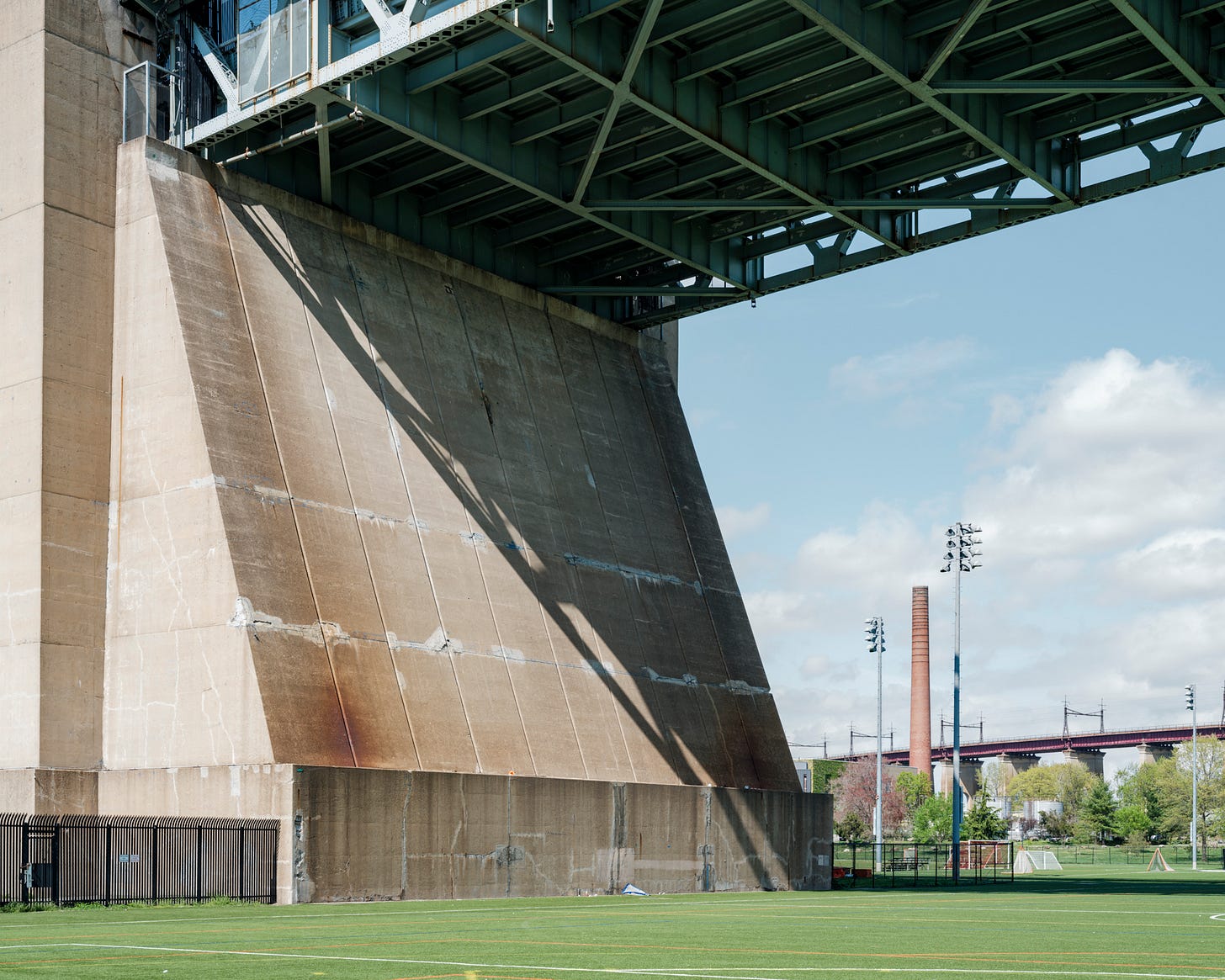
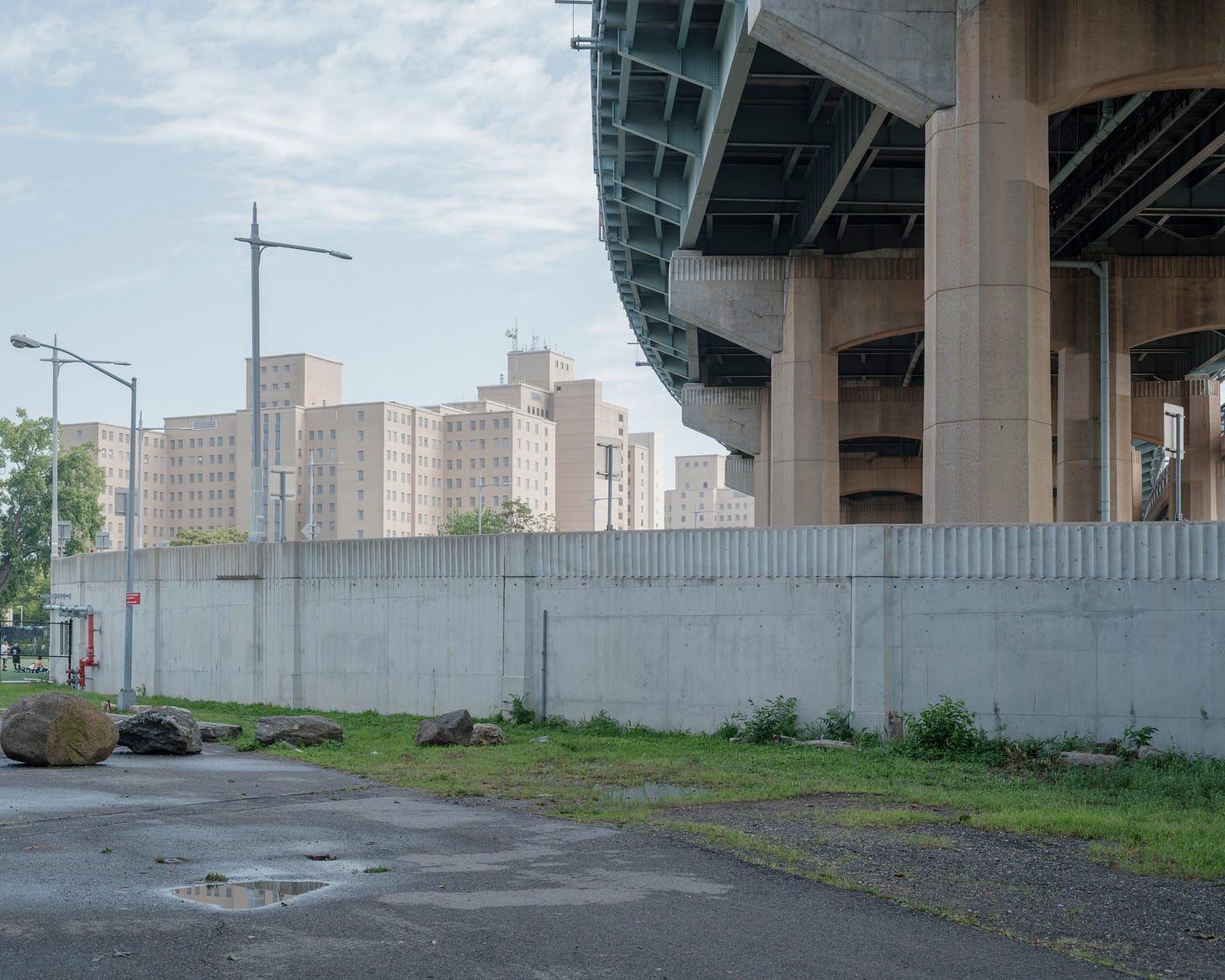
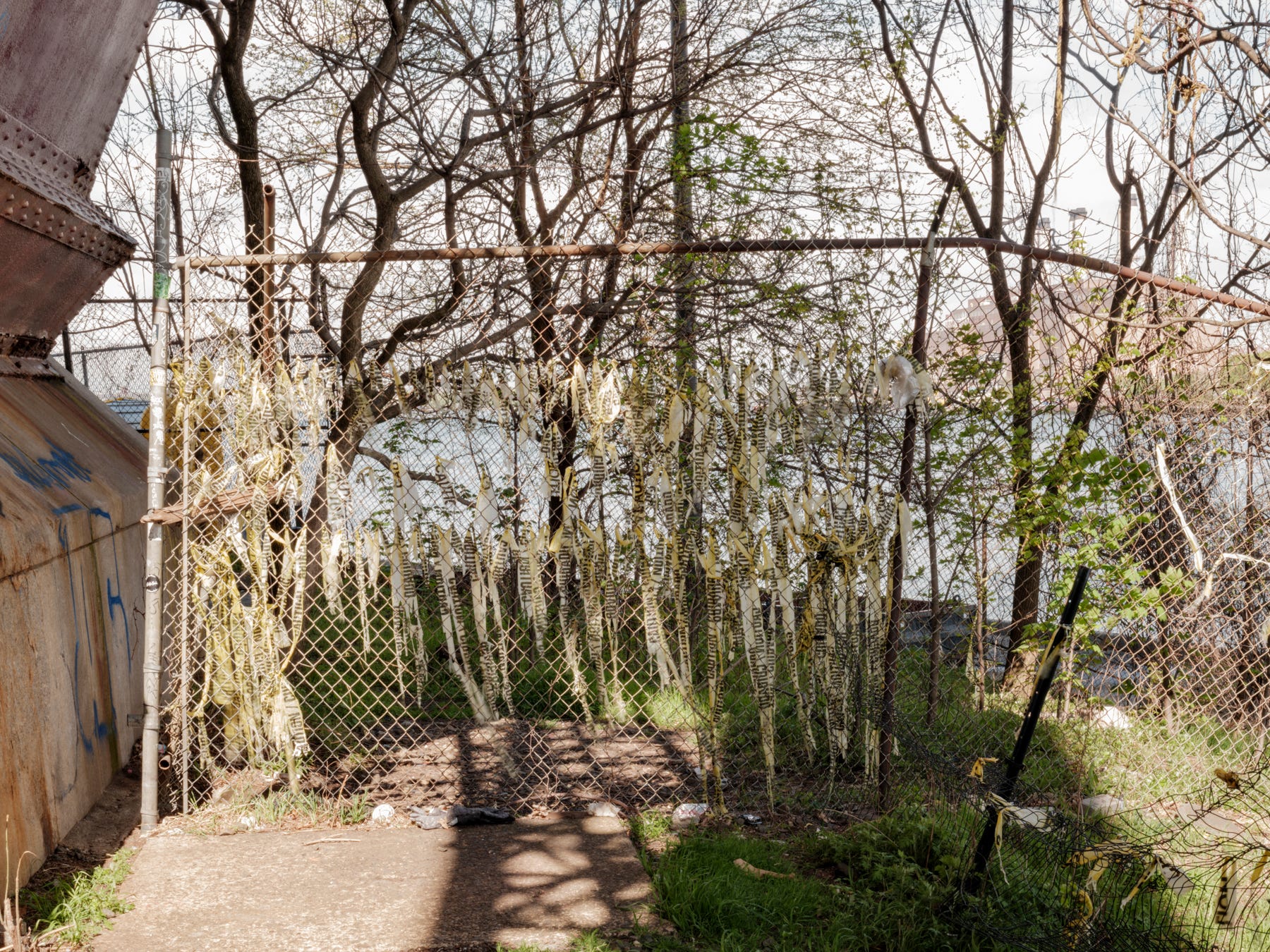
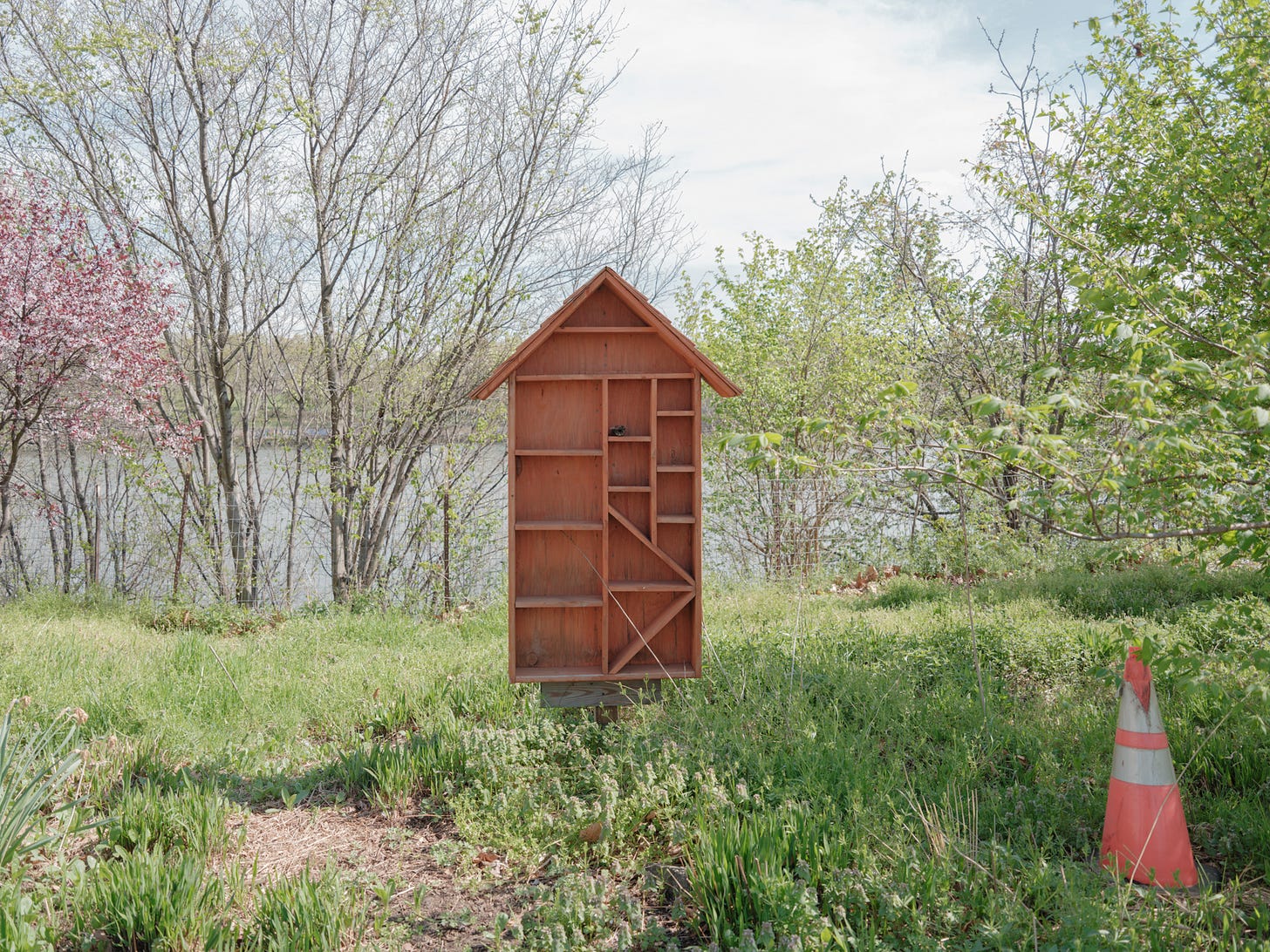
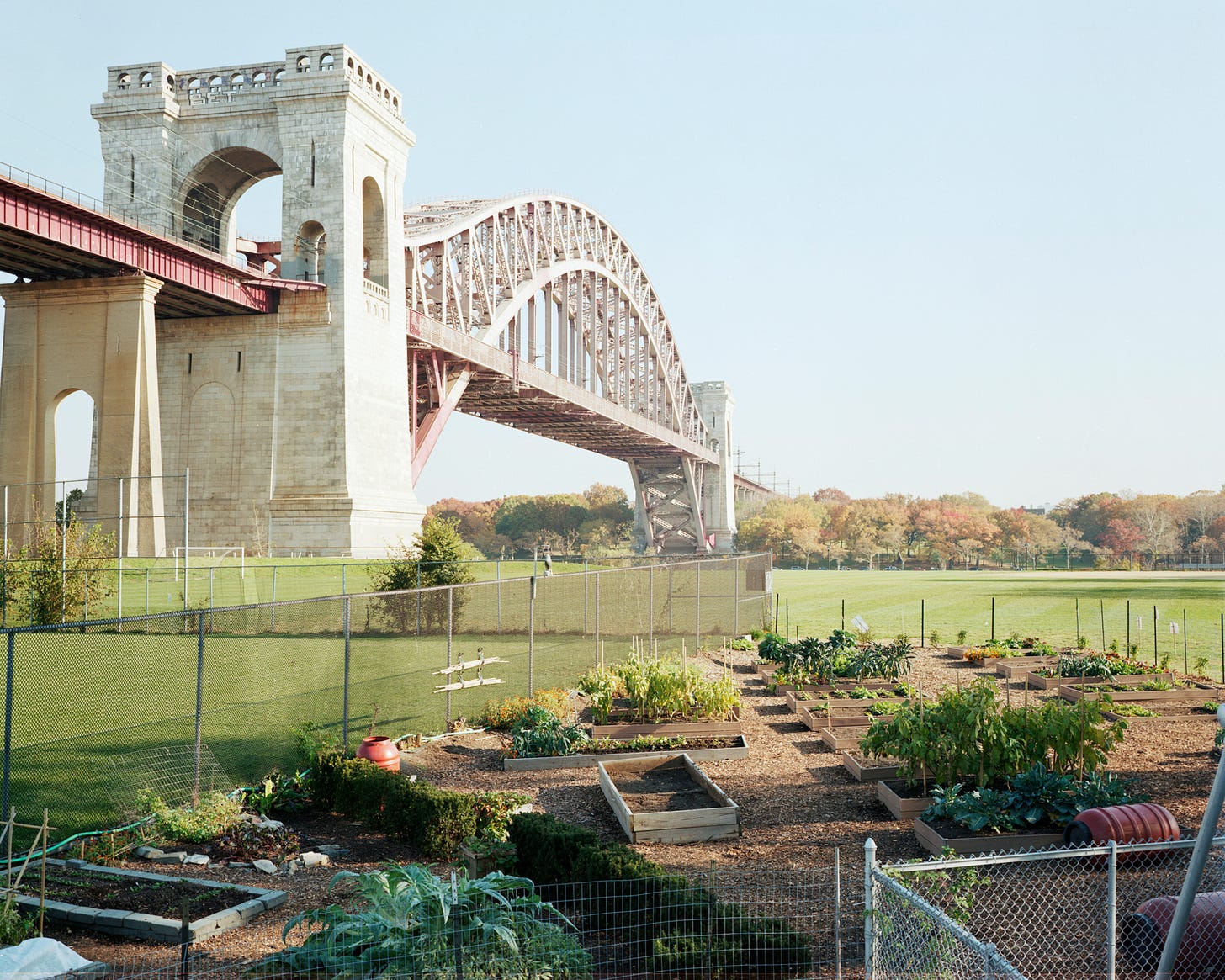
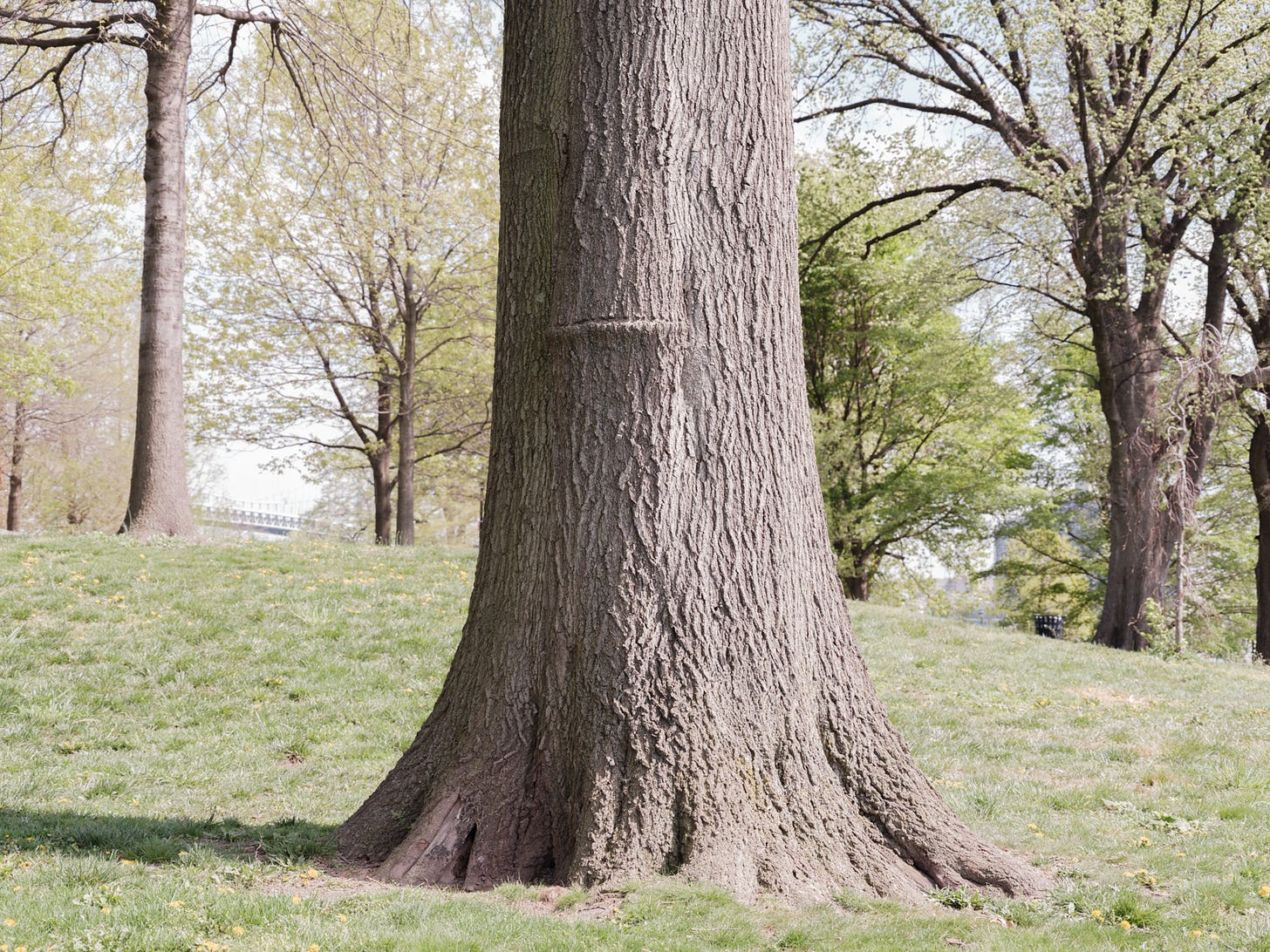

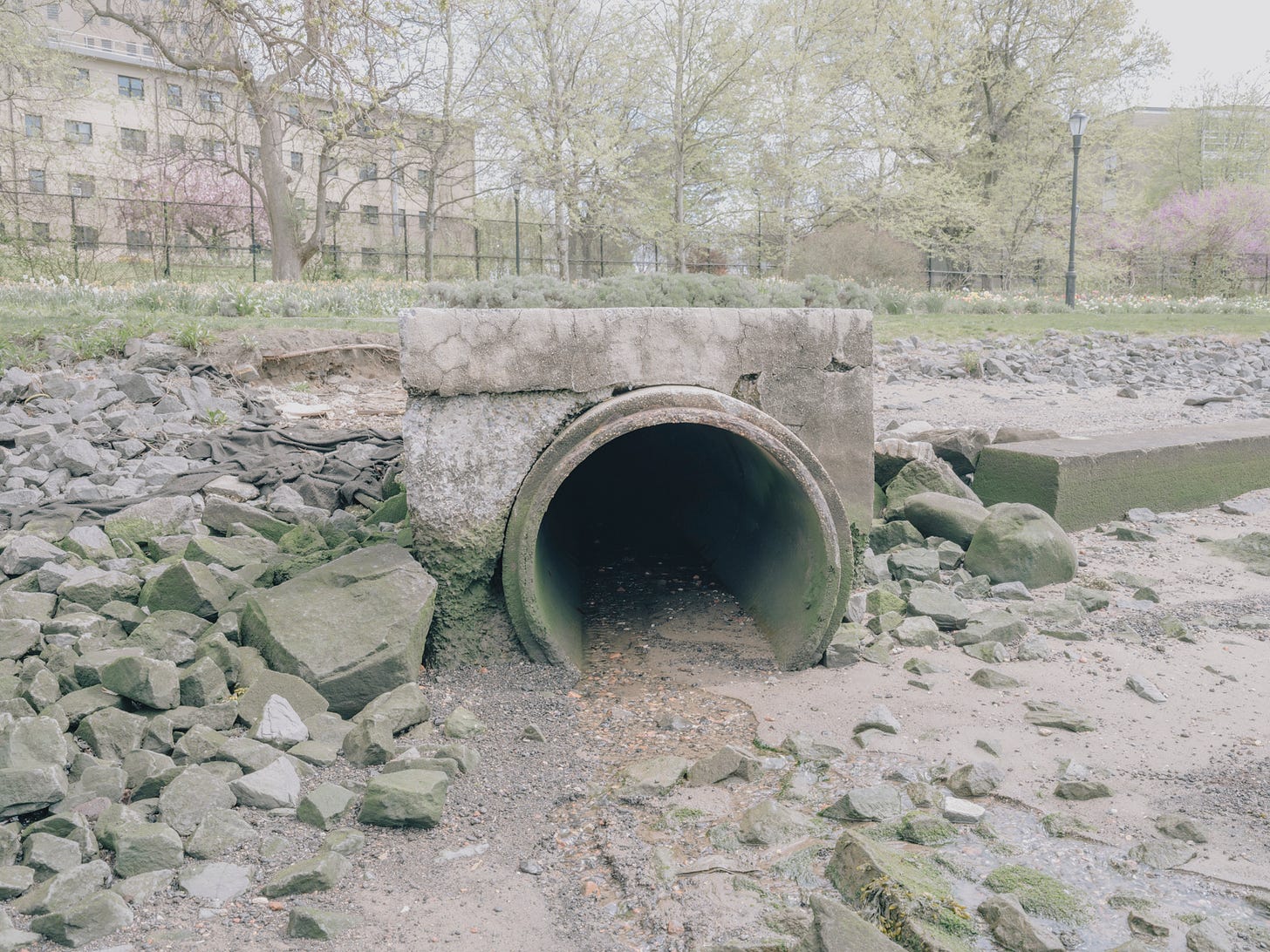
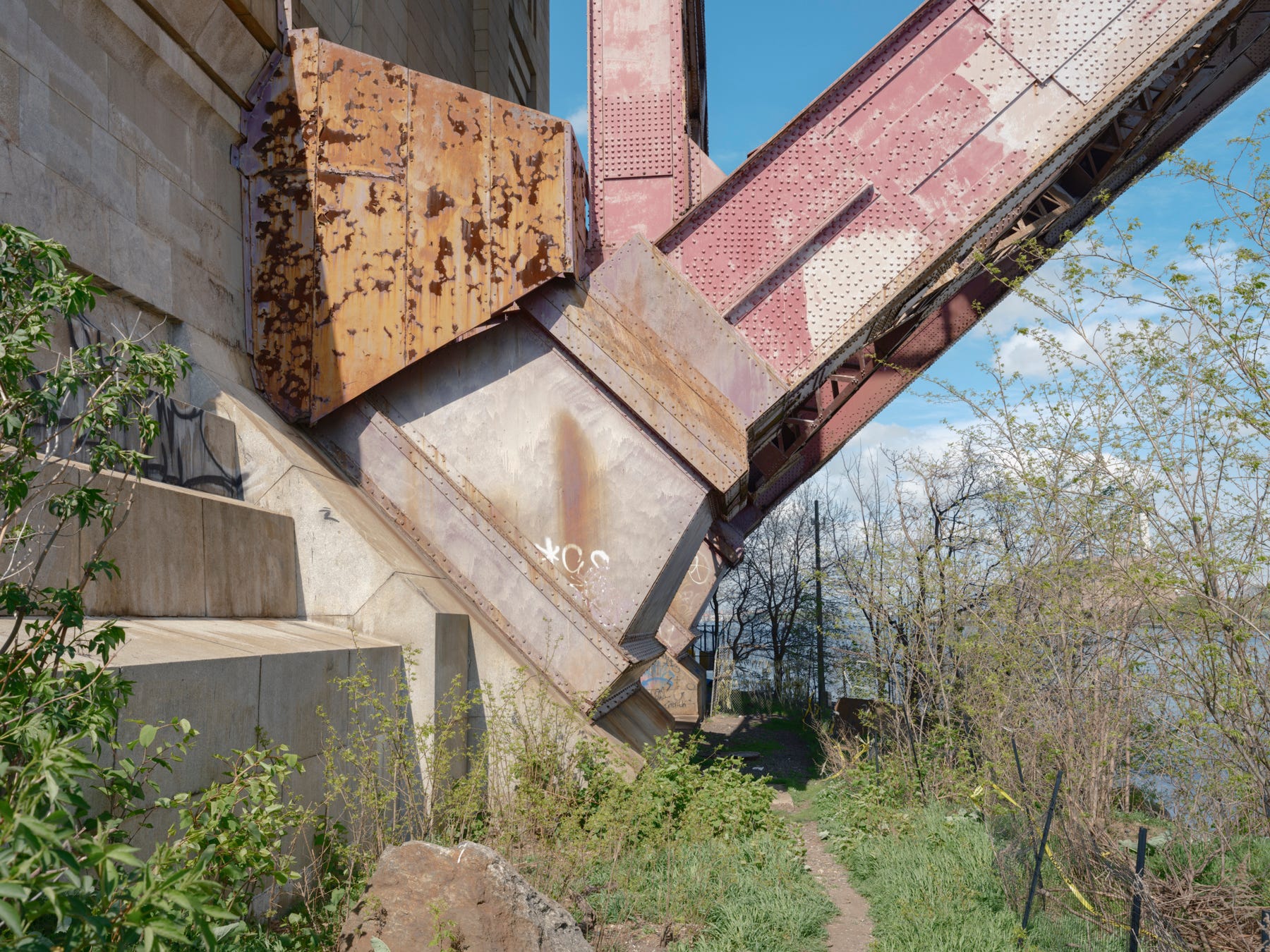
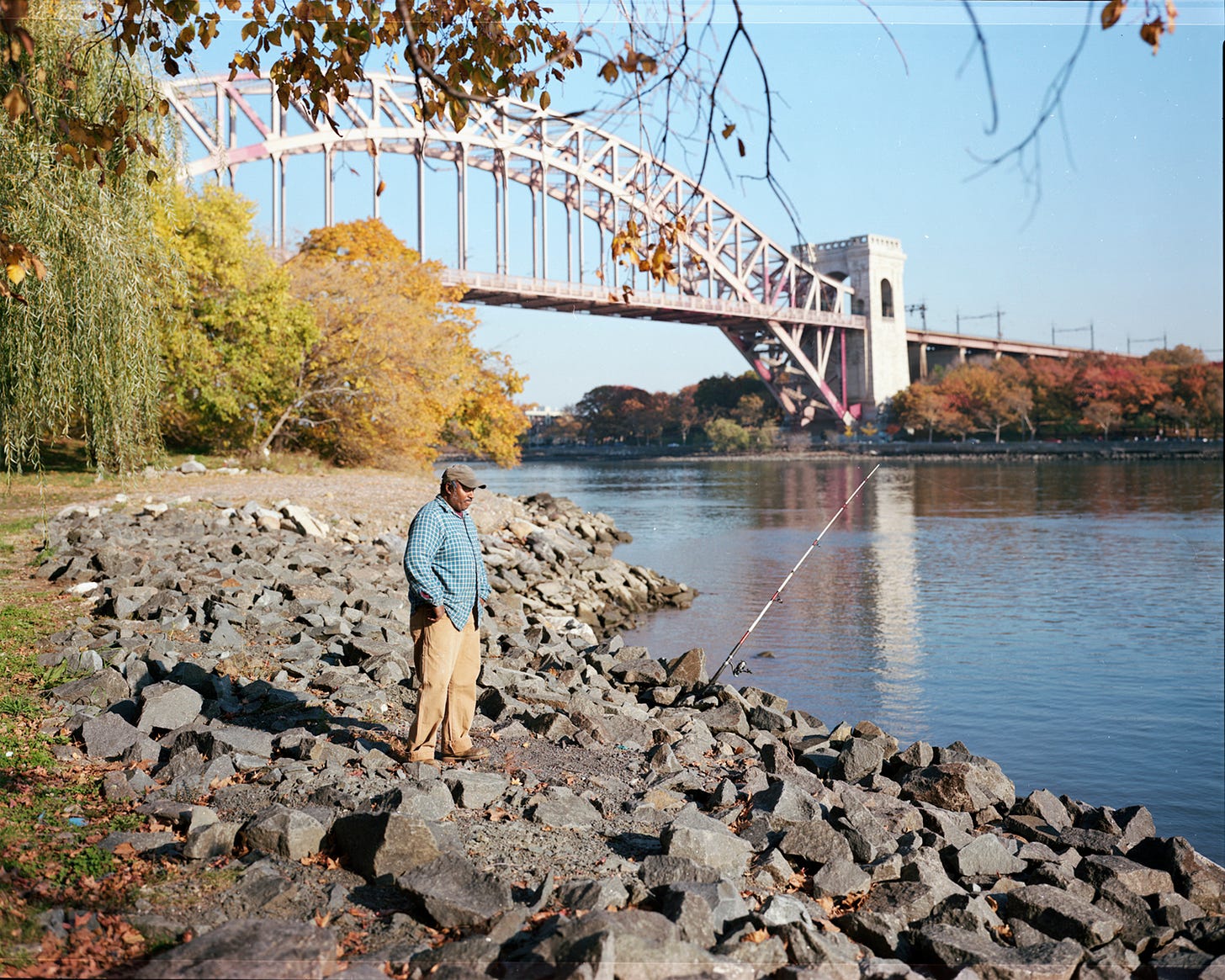
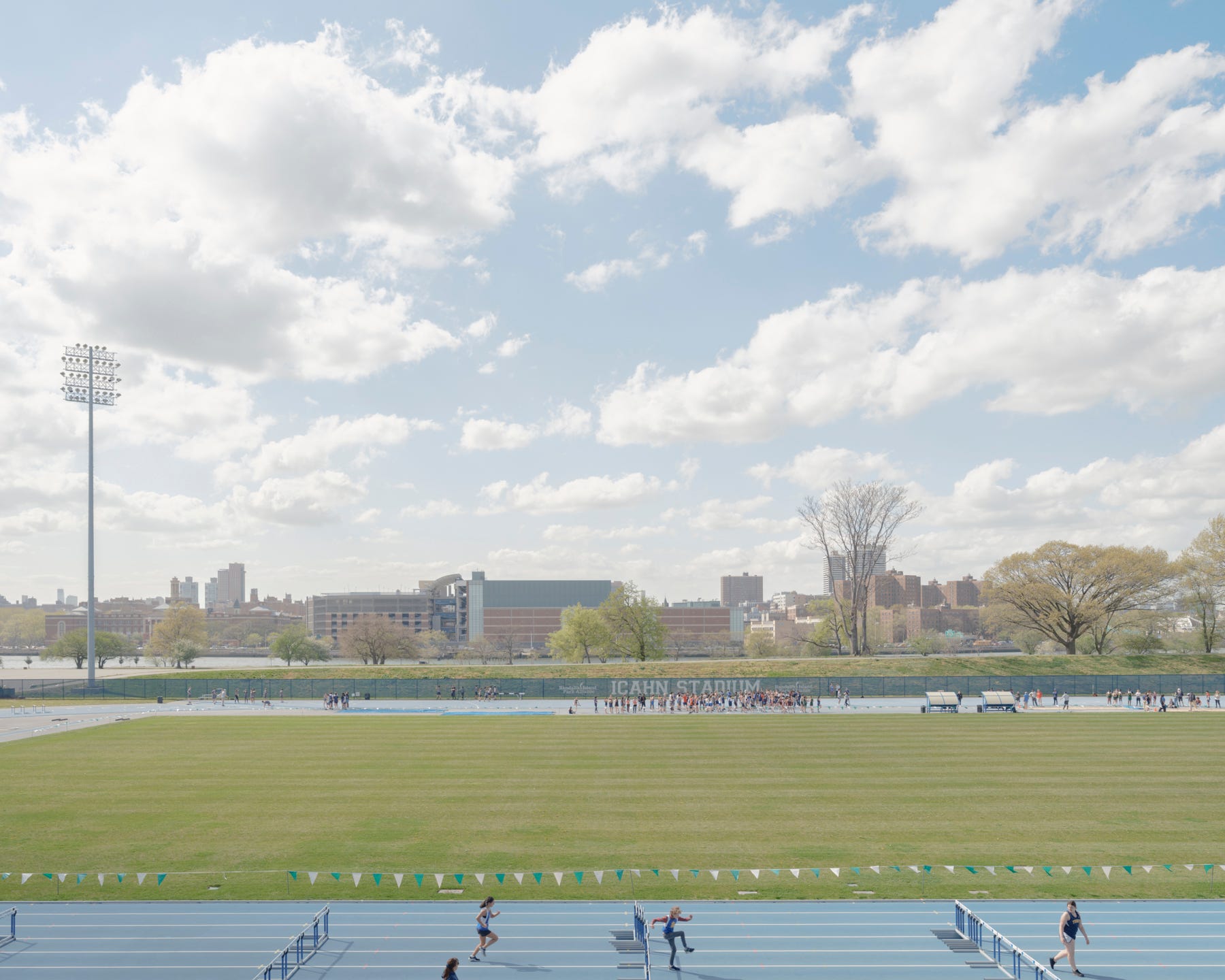
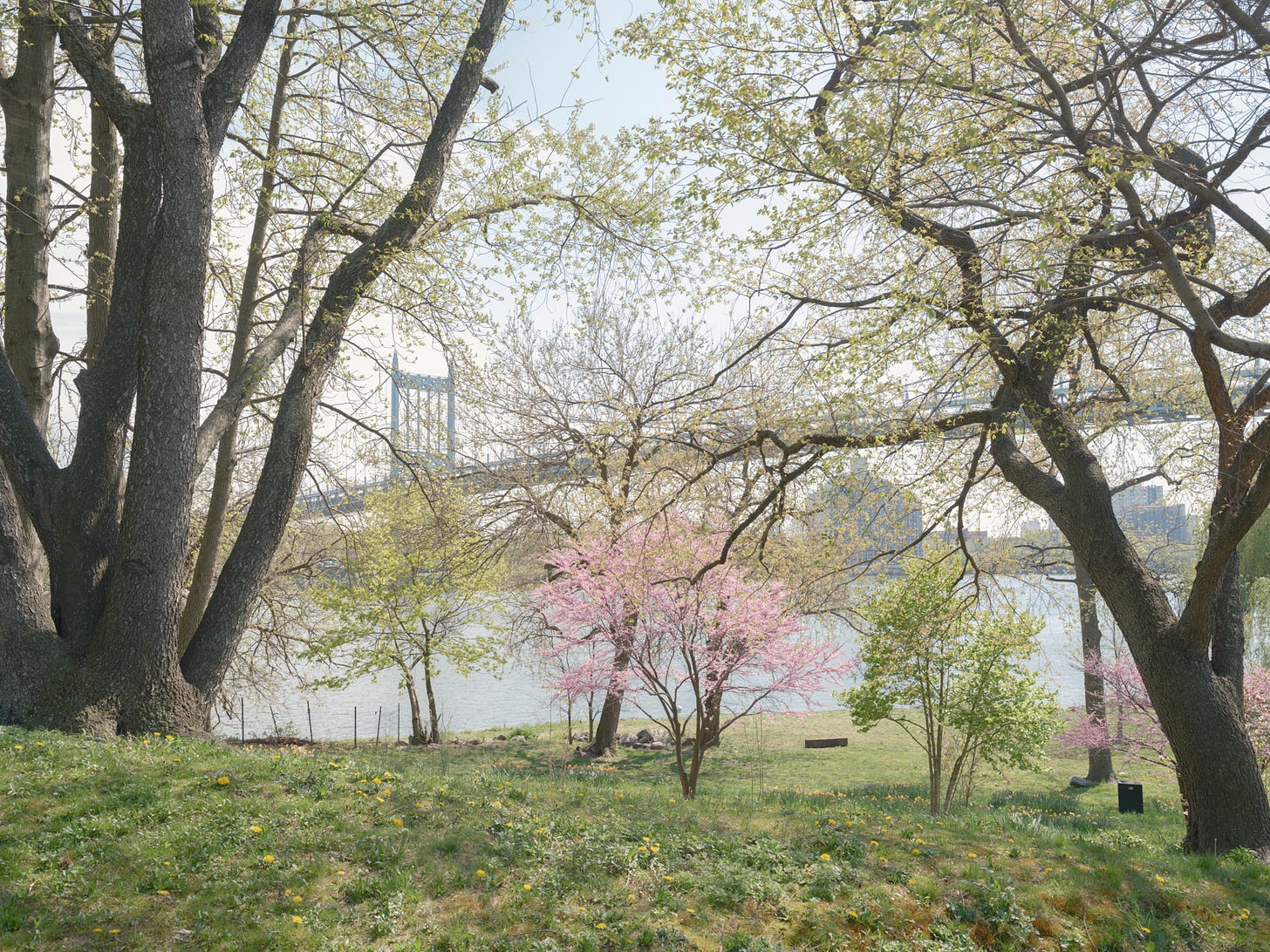
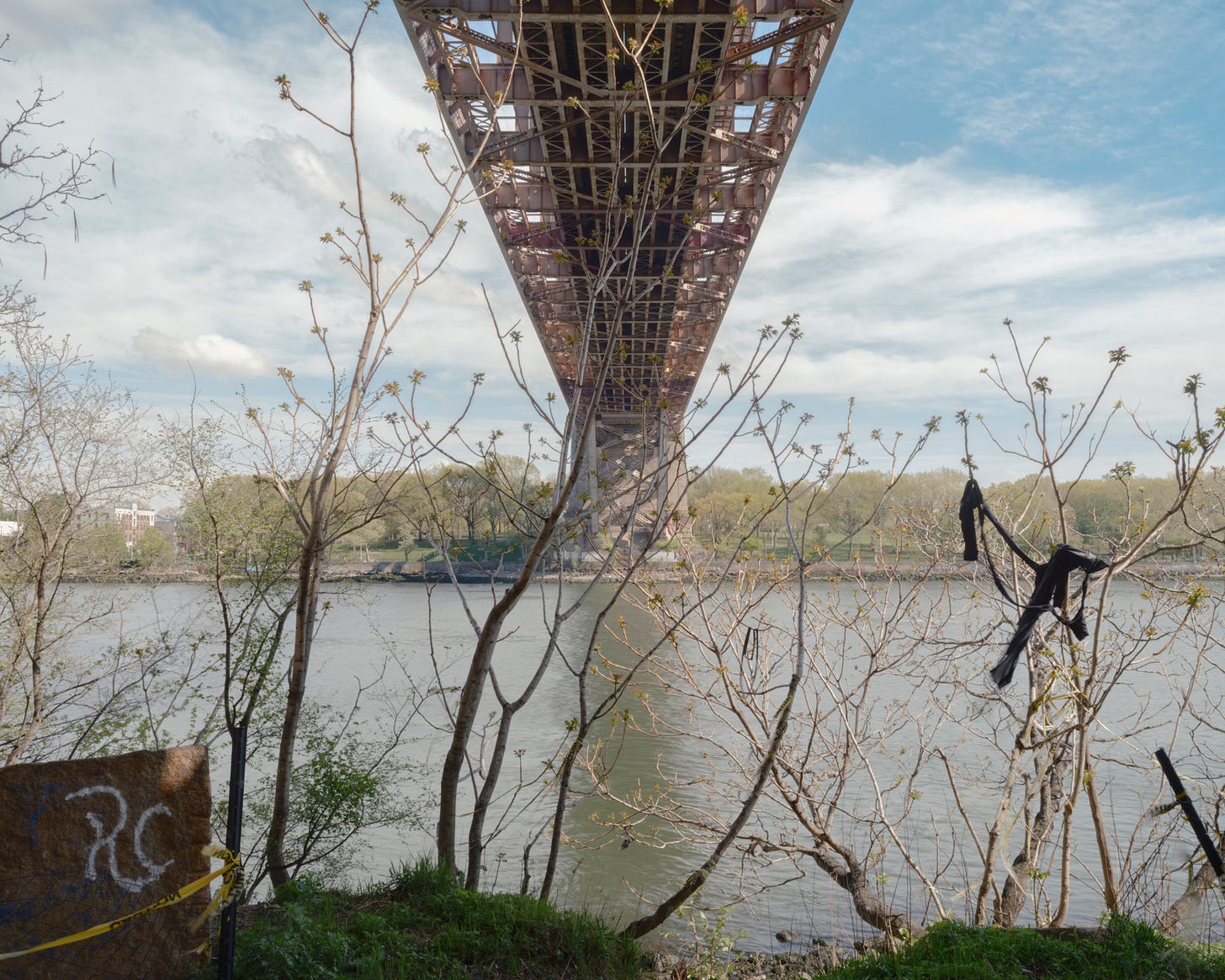

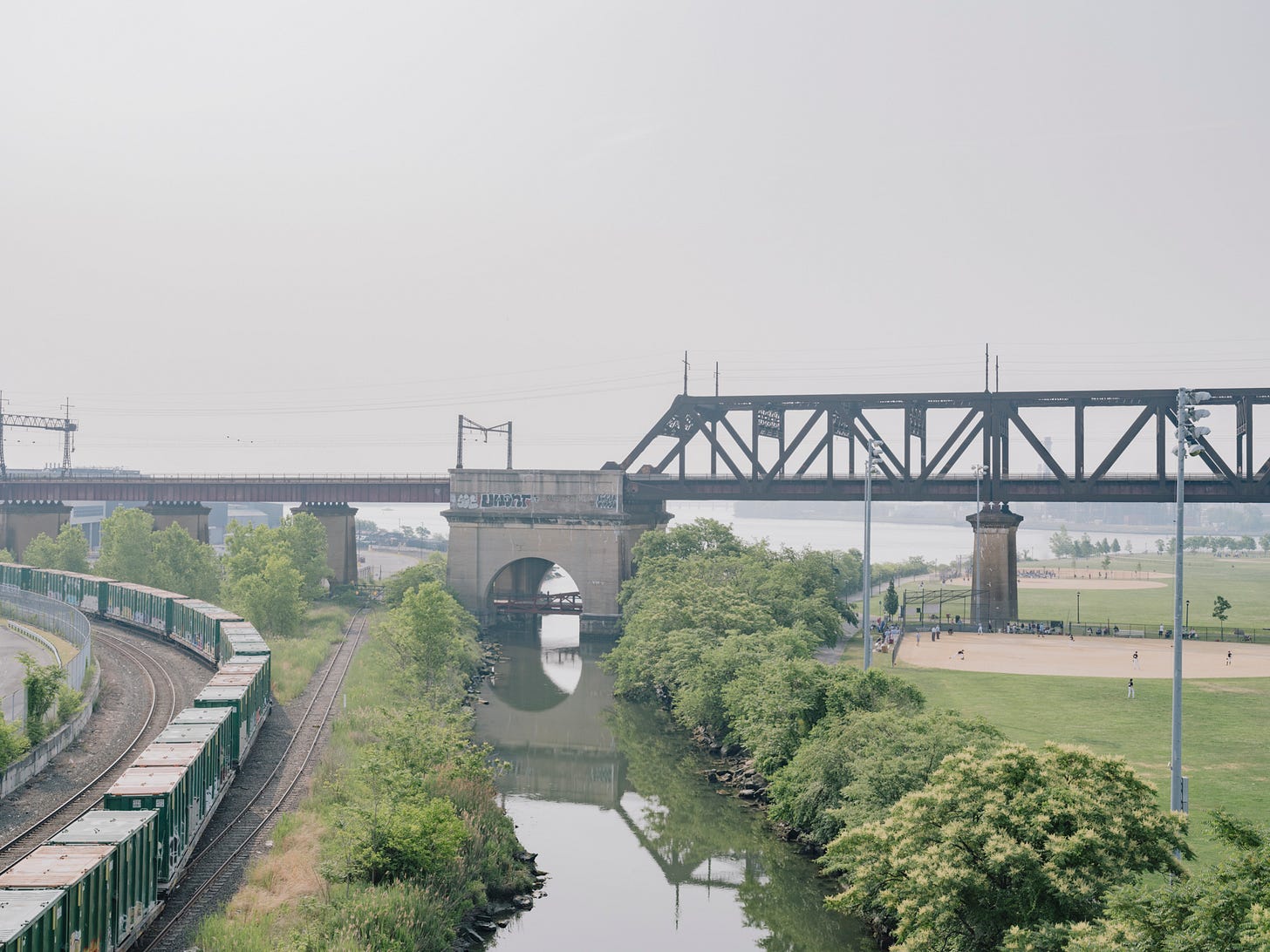
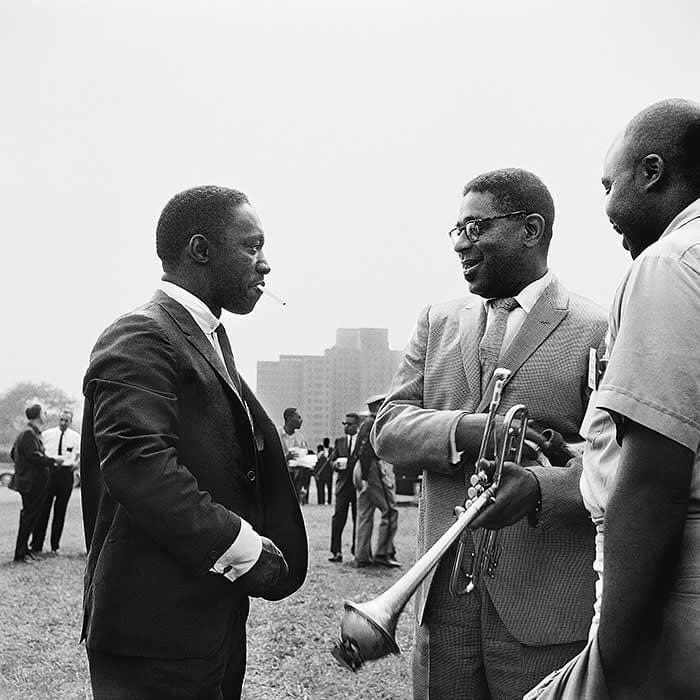
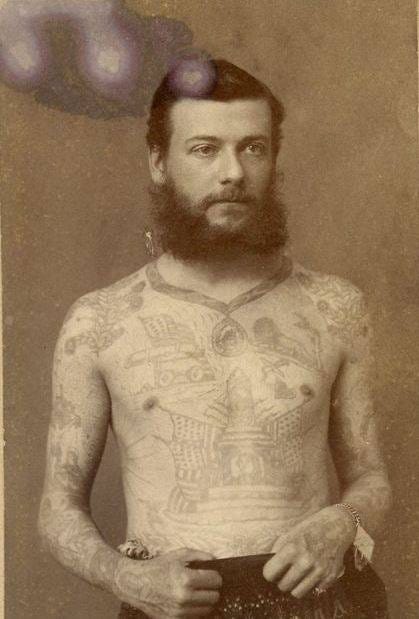
Thanks for another brilliant exploration of QBBSM (catchy)! Have you visited the old Triborough Bridge Authority building on the island? It makes an appearance in Motherless Brooklyn, though the engraved sign above its door was CGIed to 'Borough' Bridge Authority, where 'Moses Randolph' worked.
Thanks for reading Ben!